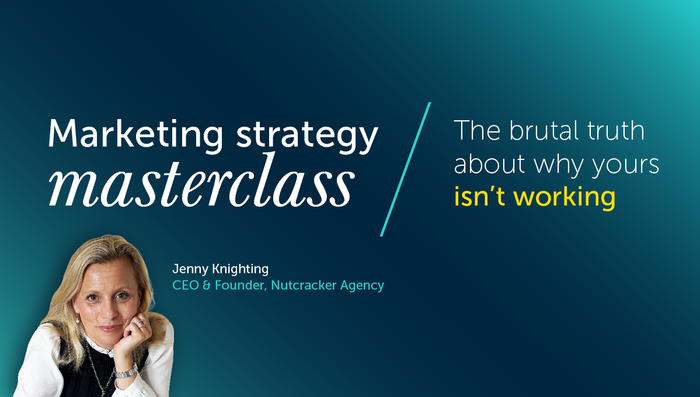Sales & Lead Generation
Common lead generation challenges (and how to overcome them)
TLDR
Facing lead generation challenges is common, but they are not roadblocks. This guide goes beyond basic marketing tips to provide actionable solutions for common obstacles like poor lead quality, misaligned teams, and inefficient funnels. By focusing on a "joined-up" strategy, implementing a consistent nurturing process, and leveraging the right data, you can build a robust lead generation engine that delivers consistent, high-quality prospects to your sales team.
How to Overcome Common Lead Generation Challenges for Your B2B Business
Have you ever invested time, energy, and thought into marketing, only to find that it isn’t generating leads? Or perhaps it is, but the leads don’t meet your criteria. That is one of the most common frustrations for those who are trying to grow a business, especially when the targets and vision for the business are ambitious.
There is no such thing as an easy fix in sales, marketing, and business growth, but there do tend to be correctable issues at the root of common lead generation challenges, like:
- Your marketing is answering questions that your prospects aren’t asking
- The creative doesn’t appeal to your target market, visually or tonally
- Your content doesn’t cover the whole customer journey
- The next steps are not clear, so your audience disengages
Here is how to start overcoming your lead generation obstacles.
Do you have content for the whole path to purchase? Considering the whole customer journey in lead generation
There is a vital rule of thumb in sales and marketing that is backed by research (Edelman) — only 5% of a given target market are actively looking for a solution, a service, or a product.
If you are struggling to generate leads, it might be that you are focusing on closing short terms deals at the expense of reaching 95% of your potential customers.
Of course you should try and capitalise on a motivated segment of your prospects, but if you only create collateral designed to close deals, you will soon run out of leads.
A sustainable long term lead generation strategy also nurtures those who
- don’t necessarily realise they have a problem to fix
- know something needs fixing but don’t know what
- may be aware that they need to fix something, but aren’t researching or seeking answers
Generating leads is only part of the process. Once someone is in your pipeline, the real work begins — you need to keep nurturing them, so that their motivation builds and their journey to purchase accelerates.
To do that, you need to offer content that appeals to those who are unaware that they have a problem, those who are researching solutions to issues they are aware of, and those who are close to making a decision on their next partner, and you need to guide them seamlessly from one stage to the next.
On the subject of the path to purchase…
Are you progressing your prospects’ journeys and keeping them engaged?
How to write CTAs for better lead conversions
Well-targeted, well-presented content can capture a prospect’s imagination engage them on a topic and intrigue them about the brand that has shared it. When it does, it would not only be shame to squander that opportunity, but it would also be a waste of the time, effort, and budget that went into creating it.
That is why you need a CTA that is both logical and compelling.
What makes a call to action logical?
You will not move your lead further along the path to purchase if the next step or the ‘ask’ is reasonable.
Brands often rush in and try to get their audience to do too much too soon, as if they have to get the deal done before the prospect gets distracted by something else. That is especially prevalent when marketing is pursuing or supporting a KPI, such as booking product demos.
That unearned urgency is far more likely to put prospects off than entice them in, a bit like proposing marriage on the first date. If you have only just introduced the prospect to a concept or your brand, then it is presumptuous to ask them to book a product demo for your solution, and they will be less inclined to engage with you further.
Far better to offer a next piece that is a more in-depth exploration of the same topic, or that tackles a related issue. That is a reasonable invitation and is much more likely to succeed.
What makes call to action compelling?
First and foremost, a CTA is only as strong as what came before it. If the content is weak, the audience probably won’t even get to the CTA. Even if they do, the best call to action in the world won’t convince them.
So, assuming your content is compelling, a powerful CTA will be one that builds on the excitement you have just created. That means being clear about what you want someone to do, what’s in it for them if they do it, and what type of content they will encounter next.
‘Read more’ won’t do the job. Your CTA should look more like this: ‘Is [problem]draining your team’s productivity? Download our guide ‘Actionable steps to reducing [problem] to boost business-wide efficiency’.
Are you answering the questions that your prospects are asking?
Creating customer-first lead generation strategies
If any of your targets is motivated to buy or research solutions, they will be motivated a specific need. They might want to learn how to do something, or want to stop something from happening. To make sure that their search leads to you and that they are happy with what they find, you will need to frame the questions and answers you present in ways that will resonate.
Typically that means using language your prospects would use, while avoiding jargon and unfamiliar industry terms as much as possible. It also means positioning your content with maximum empathy, leading with what your solution resolves for your customer, not what it does technically or functionally.
Move away from…
‘With advanced automation, intuitive workflow analytics, and AI-powered reporting, our cutting-edge software is the most advanced and efficient internal accounting tool on the market.’
…towards…
‘Finance Directors — take back your time.’
Does your creative appeal to your target audience?
Generate more leads by appealing to your target and standing out from the crowd
There are two major ways that your marketing and branding put off your prospects. One is to be so different from what they like and expect as to seem jarring and uninviting, and the other is to be so generic that you don’t register.
The art of standing out from the crowd is more than just looking different to competitors. It is doing so in a way that also communicates that you are an authority, and one that inspires. Earning that authority in how you look and communicate involves intense research on your competitors, but especially and on your target market. Drawing up personas gives you figurative characters who represent the typical buyer in a segment. Understand the persona and what appeals to them, and you go a long way to understanding how to present yourself.
You then need to be consistent with that approach. On average it takes 5-7 interactions for a new prospect to remember your brand, but they won’t recall it if it looks different at every touchpoint. The reward for getting that aspect of lead generation right is a 33% average revenue boost.
Lead generation strategies that work
If you have big ambitions for growth, but the pipeline is looking weak, and you are aware that you need to fix poorly performing lead generation campaigns, then we have published a guide that will help you to:
- Attract attention
- Build engagement
- Convert leads into lasting relationships
Download your copy and take control of your growth.
Recommended reading
What is joined-up marketing, and why is it better for B2B lead generation and sales?
This article expands on the idea of a cohesive strategy, explaining how public relations fits into a broader, "joined-up" marketing approach. It shows how integrating PR with other channels like content, SEO, and social media can shorten the B2B sales cycle, deliver high-quality leads, and maximise your return on every marketing dollar. If you want to see how to connect all your marketing efforts for better results, this is a must-read.
Author bio
Jenny Knighting, CEO & Founder at Nutcracker Agency
Jenny Knighting is the CEO and Founder of Nutcracker Agency, a B2B marketing firm with a reputation for delivering measurable results. With a strong track record of leadership in business development, sales, and integrated marketing, Jenny has a unique perspective on what it takes to drive commercial growth. Since founding Nutcracker in 2014, she has led the agency to win multiple awards and helped countless B2B clients transform their vision into a reality through strategic, results-driven campaigns. Her expertise in connecting creative strategy with tangible ROI makes her an authoritative voice in the B2B marketing space.
Share this:






